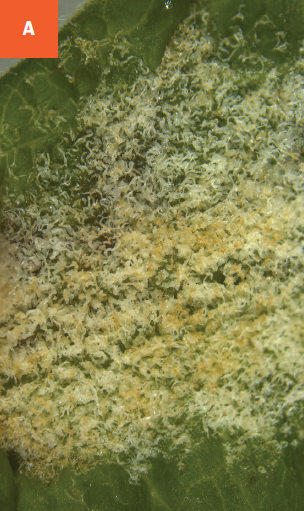Eriophyid Mites
Family Eriophyidae
HOST Several hosts
DAMAGE/SYMPTOMS The damage caused from these microscopic mites rarely causes serious harm to the plant. The mites will pierce the leaf tissue and feed within the damaged areas. This results in either distortions or galls that can take the form of a blister, finger, hair, pouch, felt-like patch, witches’ broom, or bump.
LIFE CYCLE Mites typically overwinter as fertilized adult females under bud scales or other covered areas. The females will emerge following bud break, and several generations are produced throughout the growing season.
MANAGEMENT Galls or injuries sustained by the mites are generally cosmetic and are not known to harm the tree. If practical, galls can be pruned out and discarded. Dormant oils can be applied in early spring to control the overwintering mites if several branches and leaves are affected. A miticide labeled for the host can be used at bud break to manage emerging females.
A Erinea galls on Viburnum. B Finger-like galls on lilac. C Felt-like galls on river birch.



